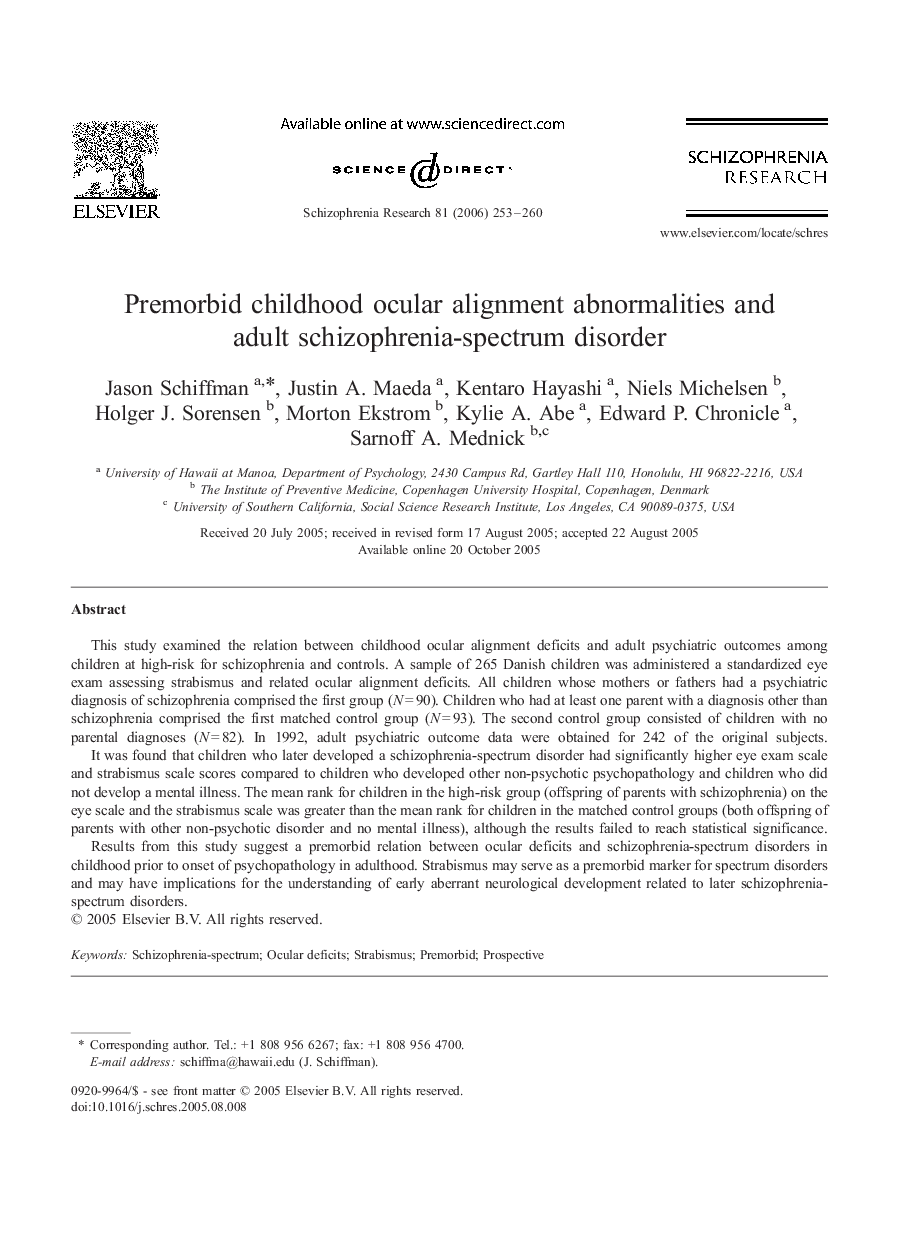| Article ID | Journal | Published Year | Pages | File Type |
|---|---|---|---|---|
| 340408 | Schizophrenia Research | 2006 | 8 Pages |
This study examined the relation between childhood ocular alignment deficits and adult psychiatric outcomes among children at high-risk for schizophrenia and controls. A sample of 265 Danish children was administered a standardized eye exam assessing strabismus and related ocular alignment deficits. All children whose mothers or fathers had a psychiatric diagnosis of schizophrenia comprised the first group (N = 90). Children who had at least one parent with a diagnosis other than schizophrenia comprised the first matched control group (N = 93). The second control group consisted of children with no parental diagnoses (N = 82). In 1992, adult psychiatric outcome data were obtained for 242 of the original subjects.It was found that children who later developed a schizophrenia-spectrum disorder had significantly higher eye exam scale and strabismus scale scores compared to children who developed other non-psychotic psychopathology and children who did not develop a mental illness. The mean rank for children in the high-risk group (offspring of parents with schizophrenia) on the eye scale and the strabismus scale was greater than the mean rank for children in the matched control groups (both offspring of parents with other non-psychotic disorder and no mental illness), although the results failed to reach statistical significance.Results from this study suggest a premorbid relation between ocular deficits and schizophrenia-spectrum disorders in childhood prior to onset of psychopathology in adulthood. Strabismus may serve as a premorbid marker for spectrum disorders and may have implications for the understanding of early aberrant neurological development related to later schizophrenia-spectrum disorders.
